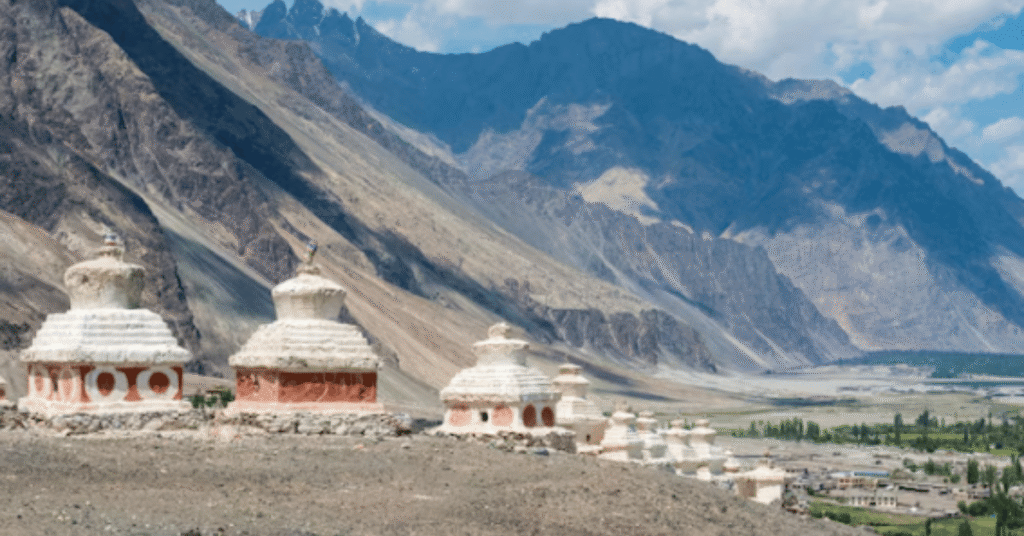Chempazhanthy is a name that resonates with history, culture, and enduring traditions in the southern state of Kerala, India. For anyone searching about Chempazhanthy, the immediate curiosity often lies in understanding whether it is a village, a place of pilgrimage, or a neighborhood known for its rich social fabric. To answer directly: Chempazhanthy is a historically significant village in the Thiruvananthapuram district of Kerala, recognized for its cultural legacy and deep ties to social reform movements. It is best known as the birthplace of Sree Narayana Guru, one of India’s most respected social reformers who championed equality, education, and the dignity of labor. Visitors and researchers alike are drawn to Chempazhanthy not only for its spiritual and cultural dimensions but also for its evolving role as a modern settlement balancing heritage with development.
The name “Chempazhanthy” itself is unique, blending the natural imagery of fruitfulness and abundance with the sense of rooted community identity. Its geographical location places it within easy reach of Kerala’s capital city, Thiruvananthapuram, making it both accessible and historically layered. Travelers often find it an intriguing blend of rural charm and urban influence. With temples, educational institutions, reformist histories, and agricultural practices still playing roles in its everyday life, Chempazhanthy represents more than just a village; it symbolizes continuity and resilience. In recent years, it has also become a focal point for heritage tourism, social research, and community-based initiatives that preserve its traditions while welcoming progress. This article explores Chempazhanthy’s history, culture, demographics, landmarks, education, and modern evolution in detail, providing readers with a comprehensive view of why this village matters in Kerala’s historical narrative.
Historical Background of Chempazhanthy
Chempazhanthy’s historical significance is deeply tied to Kerala’s broader story of reform and social awakening. While the region has been inhabited for centuries, its defining moment came in 1856, when Sree Narayana Guru, a towering reformist leader, was born here. Guru’s work challenged caste hierarchies and religious barriers, advocating instead for social justice and the empowerment of marginalized communities. His birthplace in Chempazhanthy remains preserved as a site of reverence and remembrance, attracting scholars, devotees, and admirers globally. Before Guru’s time, Chempazhanthy functioned as an agrarian village, with coconut groves, rice paddies, and traditional fishing practices sustaining families. Its proximity to the Arabian Sea and Thiruvananthapuram provided avenues for trade and cultural exchange. The influence of temples and local assemblies also shaped its political and cultural consciousness. Oral traditions recount that Chempazhanthy was a meeting place for community leaders, where discussions on education and social order were frequent, laying the foundation for the reformist movements that followed.
Geography and Demographics
Chempazhanthy is situated about 10 kilometers from Thiruvananthapuram, positioned strategically between rural farmland and the growing urban spread of Kerala’s capital. Its geography is marked by fertile soil, backwaters, and an interconnected network of roads that make it accessible yet rooted in its natural landscape. The population is diverse, comprising primarily Hindu communities with significant Christian and Muslim households contributing to a pluralistic culture. The demographic profile reveals a strong emphasis on education, with literacy rates reflecting Kerala’s wider achievement of near-universal literacy. Families in Chempazhanthy often balance agricultural livelihoods with employment in nearby Thiruvananthapuram, especially in government offices, schools, and small businesses. Migration, too, plays a role, as many residents work abroad in Gulf countries, sending remittances that strengthen household incomes and contribute to visible improvements in housing and infrastructure. This mix of local agriculture, urban employment, and overseas migration has created a distinctive socio-economic identity for Chempazhanthy, one that bridges tradition and modernity effectively.
Cultural Significance and Traditions
Culture in Chempazhanthy is inseparable from its religious and reformist background. Traditional festivals like Onam, Vishu, and local temple festivals bring families together, reinforcing community bonds. The influence of Sree Narayana Guru is deeply embedded in cultural practices, with many events dedicated to his philosophy of equality and education. Folklore, art forms like Kathakali and Ottamthullal, and classical Carnatic music performances occasionally accompany temple gatherings, keeping cultural arts alive for newer generations. Social clubs and cultural associations in Chempazhanthy play an active role in organizing programs that showcase heritage while encouraging youth participation. Marriage customs and food traditions highlight Kerala’s distinctive identity, with banana leaves, coconut-based curries, and traditional sweets forming part of celebratory feasts. In daily life, respect for elders and interdependence among families form the backbone of Chempazhanthy’s communal spirit. Culture here is not just ceremonial; it is lived, observed, and transmitted through small acts of solidarity, education, and public discussions.
Landmarks and Places of Interest
Chempazhanthy houses several landmarks that attract both pilgrims and casual visitors. The most prominent is the Sree Narayana Guru birthplace memorial, a site of spiritual reflection and historical importance. The adjoining temple and educational centers serve as reminders of Guru’s teachings. Chempazhanthy also features smaller temples, churches, and mosques that represent its pluralistic traditions. For those seeking leisure, the surrounding green landscapes, paddy fields, and coconut groves offer a quiet retreat from urban noise. Chempazhanthy is also close to notable locations like Kovalam Beach, Varkala, and the cityscape of Thiruvananthapuram, making it a suitable base for travelers. Within the village itself, cultural halls, public libraries, and community centers provide glimpses into local life. Many educational tours stop here to explore the social reform heritage, often combining visits with local craft demonstrations. Chempazhanthy is not a place of grand tourist spectacles but rather one of quiet, enduring relevance where history and daily life are seamlessly interwoven.
Table 1: Key Features of Chempazhanthy
| Feature | Details |
|---|---|
| Location | About 10 km from Thiruvananthapuram, Kerala |
| Historical Importance | Birthplace of Sree Narayana Guru |
| Main Occupations | Agriculture, small businesses, government service, overseas employment |
| Cultural Identity | Rooted in festivals, temple traditions, and reformist legacy |
| Accessibility | Well-connected by road, near city and beaches |
Education and Institutions
Education has always been central to Chempazhanthy’s identity, especially since Sree Narayana Guru emphasized learning as a path toward empowerment. Schools in the area reflect Kerala’s general excellence in public education, with high literacy rates and significant female participation. Several primary and secondary schools serve local families, often supported by both government and private initiatives. Colleges and higher secondary institutions in nearby Thiruvananthapuram extend opportunities for advanced learning, making Chempazhanthy an educationally progressive locality. Beyond formal education, community libraries and cultural organizations encourage lifelong learning. Many young residents pursue careers in medicine, engineering, teaching, and IT, reflecting aspirations that reach beyond Kerala. The local culture of respect for teachers, combined with strong parental involvement, has created an environment where education is viewed not merely as an individual achievement but as a community responsibility. This makes Chempazhanthy a model of how tradition and modernity can align through knowledge.
Economy and Livelihoods
Chempazhanthy’s economy is a blend of traditional and modern livelihoods. Historically, agriculture formed the backbone, with coconut cultivation, rice farming, and fishing supporting families. While agriculture remains important, younger generations often pursue careers in urban industries or migrate abroad for better opportunities. Remittances from Gulf countries play a vital role, contributing to higher living standards, modern homes, and new businesses in the area. Local markets still showcase agricultural produce, handicrafts, and small-scale industries like coir making, which has been a significant part of Kerala’s economy. Entrepreneurship is slowly gaining momentum, with small shops, transport businesses, and service-oriented enterprises supporting local needs. Women’s self-help groups are also active, promoting micro-enterprises and financial literacy. Overall, Chempazhanthy demonstrates how a traditional economy adapts to globalization, creating a unique balance of subsistence farming, salaried employment, and overseas income streams. This economic versatility ensures resilience and sustainability for the village’s future.
Table 2: Economic Profile of Chempazhanthy
| Sector | Contribution to Local Economy |
|---|---|
| Agriculture | Rice, coconut, vegetables, and local farming practices |
| Overseas Remittances | Significant income from Gulf migrants supporting households |
| Small Businesses | Shops, transport, and service-oriented enterprises |
| Handicrafts | Coir products, traditional crafts |
| Employment | Government jobs, education sector, IT and healthcare in nearby cities |
Modern Development and Infrastructure
Chempazhanthy is no longer solely a rural village; it has experienced noticeable modernization over recent decades. Improved roads, reliable electricity, and access to internet connectivity have made it part of Kerala’s digital expansion. Public health facilities and private clinics ensure healthcare availability, while proximity to Thiruvananthapuram provides access to major hospitals. The housing landscape has changed dramatically, with many families upgrading to modern homes financed through remittances. Infrastructure also includes community centers, banks, and transport services that link residents to the capital and surrounding areas. However, development comes with challenges such as waste management, traffic congestion, and the need to preserve green spaces amidst construction. Local governance, aided by strong community participation, works toward balancing progress with sustainability. Chempazhanthy today reflects the story of Kerala itself: a place deeply tied to tradition yet embracing modernity, aware of its challenges but driven by its community spirit.
Conclusion
Chempazhanthy is more than just a geographical name; it is a living example of Kerala’s cultural richness, reformist heritage, and modern adaptability. From being the birthplace of Sree Narayana Guru to standing as a symbol of education and resilience, Chempazhanthy captures the story of a village that has contributed significantly to India’s social progress. Its landscapes, traditions, and people reflect the continuity of heritage while embracing the transformations of globalization. What makes Chempazhanthy remarkable is its ability to hold history close without letting it confine its future. The village demonstrates how small communities can influence broad cultural and social movements, reminding us that history often emerges from places of quiet resilience. As a quote often attributed to Guru himself states, “Ask not, say not, think not caste,” Chempazhanthy continues to embody this philosophy, creating a legacy that is both rooted and forward-looking.
FAQs
Q1: Why is Chempazhanthy historically significant?
Chempazhanthy is historically significant as the birthplace of Sree Narayana Guru, a reformer who shaped Kerala’s social equality movements.
Q2: What are the main occupations in Chempazhanthy?
The main occupations include agriculture, small businesses, government jobs, and income from residents working abroad in Gulf countries.
Q3: Is Chempazhanthy accessible for tourists?
Yes, it is about 10 kilometers from Thiruvananthapuram, with good road connections and proximity to cultural and coastal sites.
Q4: What role does education play in Chempazhanthy?
Education is central, with high literacy rates, active schools, and a culture of learning influenced by Guru’s reformist ideals.
Q5: How has Chempazhanthy modernized in recent years?
The village has modernized through better infrastructure, housing, healthcare, and connectivity while balancing sustainability and cultural preservation.







